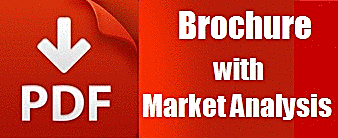
Vinod Kumar
ISRO Satellite Centre
India
Title: Real-Time Autonomous Attitude and Orbit Control system for Satellites: A Necessity
Biography
Biography: Vinod Kumar
Abstract
In view of possibility of diverse applications from space the requirement for satellites is increasing. These applications include internet access, entertainment, broadcast, navigation, cellular phone, remote sensing missions, scientific missions and so forth, hence the requirement for more satellites. Each nation and space agency wants to harness its benefits and hence demand to launch more and more satellites arises. This calls for autonomous attitude and orbit control system for satellites from launch onwards, not only for individual satellites but also for the satellites in formation. This talk is focused on the autonomous spacecraft operations after injection till the end of life of a satellite. The autonomous attitude control system is achieved by the on-board sensors. The autonomous orbit control system needs development of an on-board navigation system. It requires precise knowledge of the absolute state (position, velocity, and time i.e. PVT) of the spacecraft as well as relative state of the neighboring spacecraft. The relative navigation requires inter satellite communication at ultra-high frequency. There exists a gap in the observability of the states of a satellite. This gap can be bridged by using Global Navigation Satellite System (GNSS) or by novel infra-red earth sensor and star sensor based autonomous navigation techniques. GNSS is used for kinematic PVT estimation. The kinematic formulation is geometric, and it is vulnerable to weak GNSS geometry, data outages, cycle slip, and large dilution of precision. In this situation, dynamics can provide the solutions with little degradation in accuracy. This requires combining the GNSS measurements with dynamics in an Extended Kalman Filter (EKF), thus providing continuity in the PVT estimates. Another challenge is contingency management in case of GNSS outages or malfunction. This requires alternate relative navigation and control using, for instance, laser range finder and optical navigation. We also discuss an optical navigation and control technique for formation flying satellites using monocular model-based vision. These methods will be useful even during the geostationary transfer orbit phase, autonomous station-keeping, rendezvous and docking, for interplanetary missions during their transfer orbit phase for some period, and to the low-Earth-orbit remote sensing satellites.

